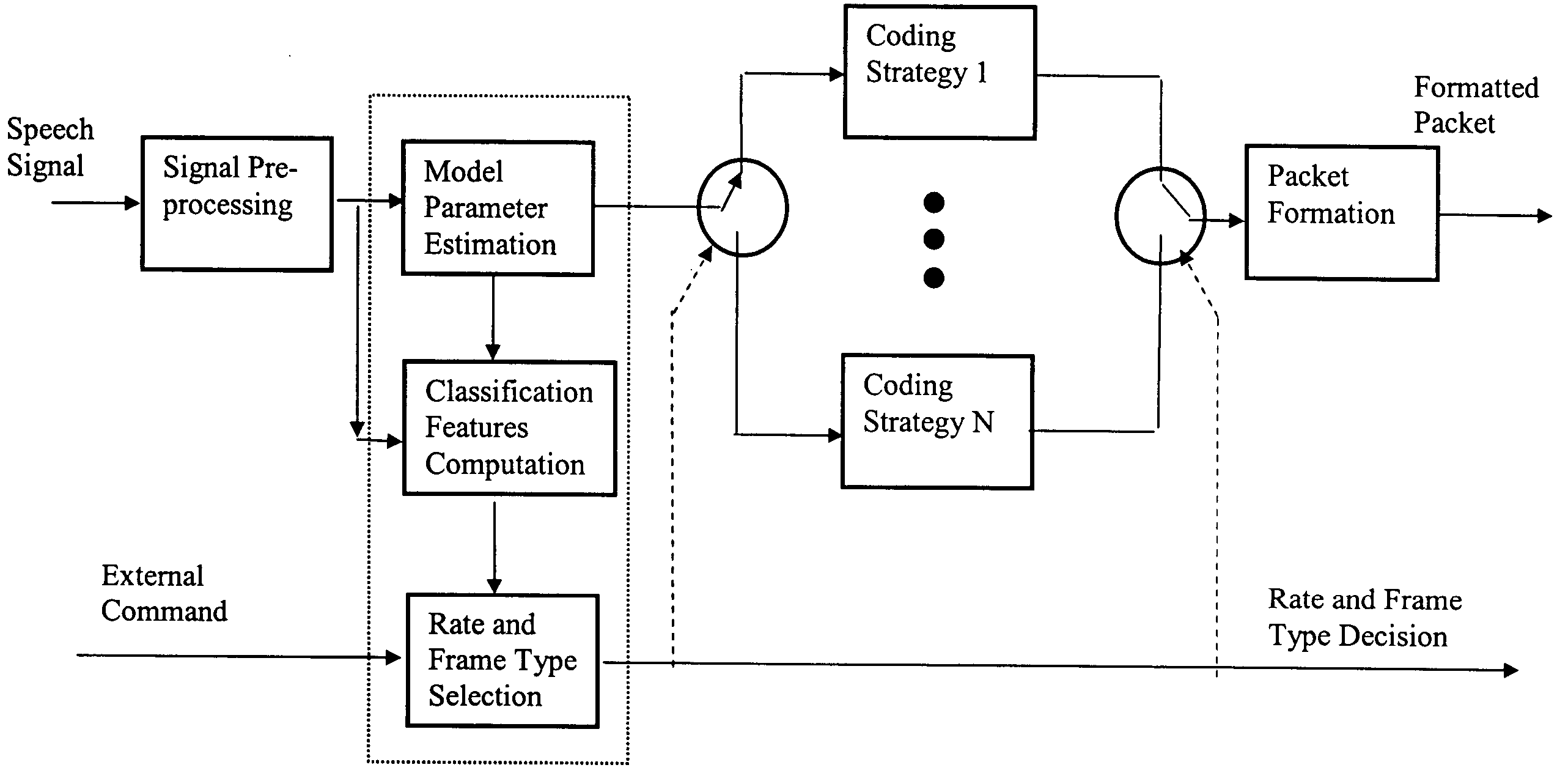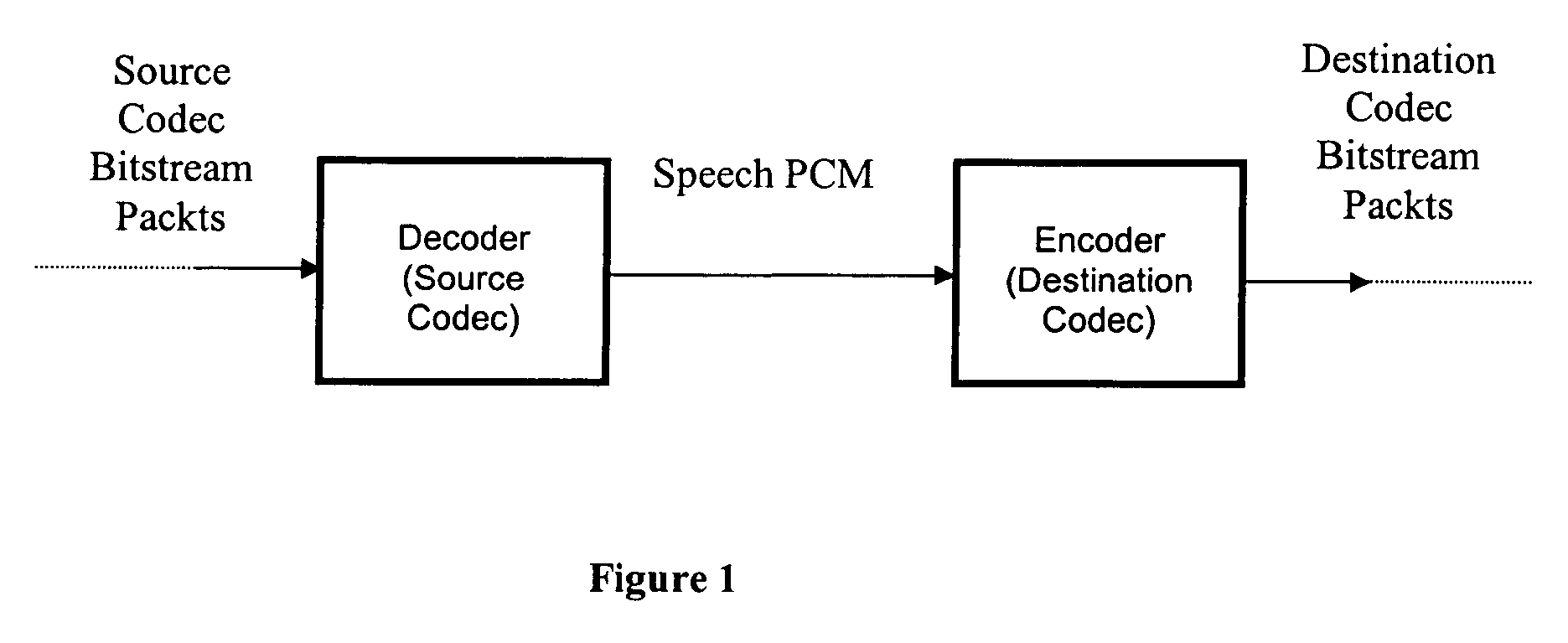Method and apparatus for voice transcoding between variable rate coders
- Summary
- Abstract
- Description
- Claims
- Application Information
AI Technical Summary
Benefits of technology
Problems solved by technology
Method used
Image
Examples
Embodiment Construction
According to the present invention, techniques for processing of telecommunication signals are provided. More particularly, the present invention relates to a method and apparatus for transcoding a bitstream encoded by a first voice speech coding format into a bitstream encoded by a second variable-rate voice coding format. Merely by way of example, the invention has been applied to variable-rate voice transcoding, but it would be recognized that the invention may also be applicable to other applications.
A method and apparatus of the invention are discussed in detail below. In the following description, for purposes of explanation, numerous specific details are set forth in order to provide a thorough understanding of the present invention. The case of SMV and EVRC are used for the purpose of illustration and for examples. The methods described here are generic and apply to the transcoding between any pair of linear prediction-based voice codecs. A person skilled in the relevant ...
PUM
 Login to View More
Login to View More Abstract
Description
Claims
Application Information
 Login to View More
Login to View More - R&D
- Intellectual Property
- Life Sciences
- Materials
- Tech Scout
- Unparalleled Data Quality
- Higher Quality Content
- 60% Fewer Hallucinations
Browse by: Latest US Patents, China's latest patents, Technical Efficacy Thesaurus, Application Domain, Technology Topic, Popular Technical Reports.
© 2025 PatSnap. All rights reserved.Legal|Privacy policy|Modern Slavery Act Transparency Statement|Sitemap|About US| Contact US: help@patsnap.com



